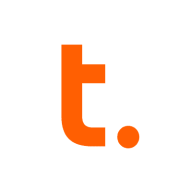

Teradata and Azure Data Factory compete in the data management and analytics scenes. Azure Data Factory has an edge due to its cloud-native design and ease of integration in modern cloud environments.
Features: Teradata offers strong parallel processing, scalability, and an optimized structure for fast query execution on large datasets. It supports extensive analytics ideal for data warehousing tasks. Azure Data Factory highlights ease of use with numerous built-in connectors and visual orchestration, making it appealing for users who favor intuitive, drag-and-drop functionalities.
Room for Improvement: Teradata is criticized for its high cost and limited cloud and unstructured data support. There's a need for more intuitive interfaces and better scalability in dynamic settings. Azure Data Factory can enhance by simplifying its pricing model, boosting real-time processing capabilities, and increasing its support for various connectors and service integrations.
Ease of Deployment and Customer Service: Teradata is well-established in on-premises and hybrid environments and excels in structured settings; it benefits clients familiar with its system through excellent support. Azure Data Factory is designed for cloud-based applications with seamless integration in the Azure ecosystem, benefitting from Microsoft's extensive support, though it could improve the technical support's response time.
Pricing and ROI: Teradata's pricing is often seen as high, potentially deterring cost-conscious clients, though it offers significant value for large data operations and substantial ROI for big enterprises. Azure Data Factory uses a pay-as-you-go model, seen as affordable and flexible, attracting businesses with changing workloads, though its pricing predictions can be complex. It generally ensures cost-effectiveness for cloud-focused strategies.
Our stakeholders and clients have expressed satisfaction with Azure Data Factory's efficiency and cost-effectiveness.
We have realized a return on investment, with a reduction of staff from 27 to eight, and our current return on investment is approximately 14%.
The technical support from Microsoft is rated an eight out of ten.
The technical support is responsive and helpful
The technical support for Azure Data Factory is generally acceptable.
The customer support for Teradata has been great.
Customer support is very good, rated eight out of ten under our essential agreement.
The technical support from Teradata is quite advanced.
Azure Data Factory is highly scalable.
This expansion can occur without incurring downtime or taking systems offline.
Scalability is complex as you need to purchase a license and coordinate with Teradata for additional disk space and CPU.
Teradata's scalability is great; it's been awesome.
The solution has a high level of stability, roughly a nine out of ten.
I find the stability to be almost a ten out of ten.
The workload management and software maturity provide a reliable system.
Incorporating more dedicated API sources to specific services like HubSpot CRM or Salesforce would be beneficial.
Sometimes, the compute fails to process data if there is a heavy load suddenly, and it doesn't scale up automatically.
There is a problem with the integration with third-party solutions, particularly with SAP.
Unlike SQL and Oracle, which have in-built replication capabilities, we don't have similar functionality with Teradata.
The most challenging aspect is finding Teradata resources, so we are focusing on internal training and looking for more Teradata experts.
The pricing is cost-effective.
It is considered cost-effective.
Teradata is much more expensive than SQL, which is well-performed and cheaper.
Initially, it may seem expensive compared to similar cloud databases, however, it offers significant value in performance, stability, and overall output once in use.
We spent roughly $295,000 on setup costs.
It connects to different sources out-of-the-box, making integration much easier.
The platform excels in handling major datasets, particularly when working with Power BI for reporting purposes.
Regarding the integration feature in Azure Data Factory, the integration part is excellent; we have major source connectors, so we can integrate the data from different data sources and also perform basic transformation while transforming, which is a great feature in Azure Data Factory.
Teradata's security helps our organization meet compliance requirements such as GDPR and IFRS, and it is particularly essential for revenue contracting or revenue recognition.
The data mover is valuable over the last two years as it allows us to achieve data replication to our disaster recovery systems.
| Product | Market Share (%) |
|---|---|
| Azure Data Factory | 5.2% |
| Teradata | 0.8% |
| Other | 94.0% |


| Company Size | Count |
|---|---|
| Small Business | 31 |
| Midsize Enterprise | 19 |
| Large Enterprise | 55 |
| Company Size | Count |
|---|---|
| Small Business | 26 |
| Midsize Enterprise | 12 |
| Large Enterprise | 49 |
Azure Data Factory efficiently manages and integrates data from various sources, enabling seamless movement and transformation across platforms. Its valuable features include seamless integration with Azure services, handling large data volumes, flexible transformation, user-friendly interface, extensive connectors, and scalability. Users have experienced improved team performance, workflow simplification, enhanced collaboration, streamlined processes, and boosted productivity.
Teradata is a powerful tool for handling substantial data volumes with its parallel processing architecture, supporting both cloud and on-premise environments efficiently. It offers impressive capabilities for fast query processing, data integration, and real-time reporting, making it suitable for diverse industrial applications.
Known for its robust parallel processing capabilities, Teradata effectively manages large datasets and provides adaptable deployment across cloud and on-premise setups. It enhances performance and scalability with features like advanced query tuning, workload management, and strong security. Users appreciate its ease of use and automation features which support real-time data reporting. The optimizer and intelligent partitioning help improve query speed and efficiency, while multi-temperature data management optimizes data handling.
What are the key features of Teradata?In the finance, retail, and government sectors, Teradata is employed for data warehousing, business intelligence, and analytical processing. It handles vast datasets for activities like customer behavior modeling and enterprise data integration. Supporting efficient reporting and analytics, Teradata enhances data storage and processing, whether deployed on-premise or on cloud platforms.
We monitor all Data Integration reviews to prevent fraudulent reviews and keep review quality high. We do not post reviews by company employees or direct competitors. We validate each review for authenticity via cross-reference with LinkedIn, and personal follow-up with the reviewer when necessary.